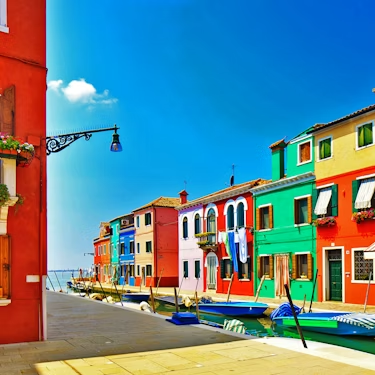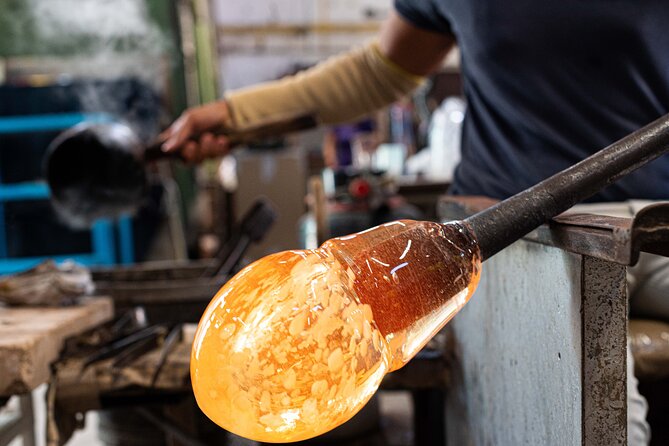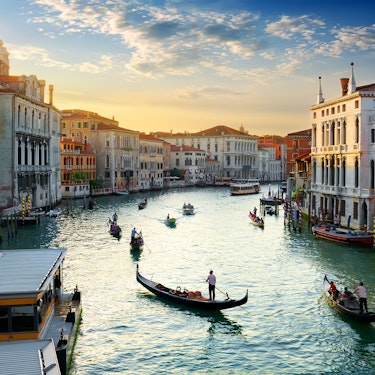More about: 10 Best Things To Do In Venice’S Grand Canal
The Grand Canal of Venice has been the most important commercial route in the city since its foundation. Throughout history, some of the city's most important architectural works have been built in this historic location, shaping and bringing life to the city and serving as the backdrop for important events. Are you eager to explore the Grand Canal? Let's take a look at some of the things you can see and do during a gondola ride along its waters.
1. Tour the Grand Canal by boat
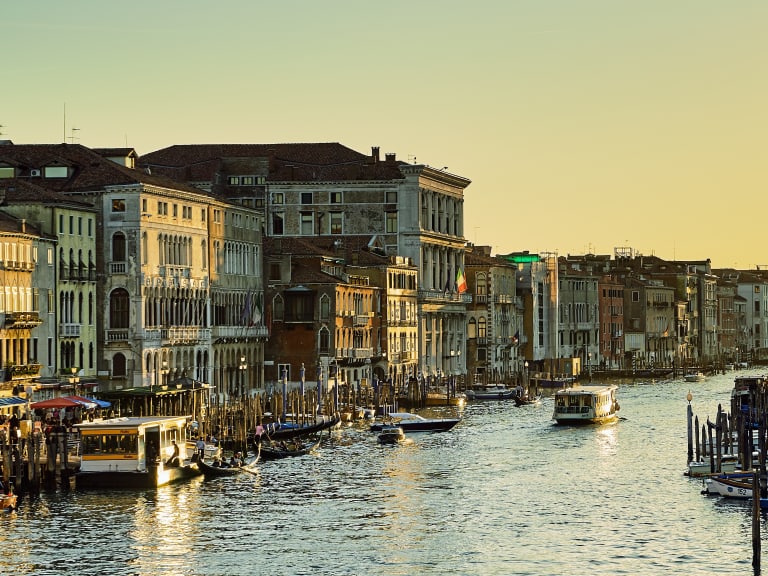
The best way to appreciate the architectural and historical richness of Venice is through a quick tour of the city's main thoroughfare: the Grand Canal. In Venice, you will find several transportation options ranging from an excursion or guided tour to the city's floating public transportation known as the vaporetto, which moves at high speed through the canal.
A cruise on the Grand Canal with an expert guide is the best option. The guide will point out each of the palaces and sites of historical and political interest. In addition, the tours include several stops to get closer to the most emblematic buildings and enjoy perfect views.
Keep in mind that Venice's architectural wealth is one of a kind. During the commercial and economic growth of this beautiful city, the construction of palaces and stately homes along the Grand Canal was considered one of the greatest displays of wealth and opulence. Today, along the canal, you can see and appreciate a varied collection of architectural styles ranging from the 12th to the late 18th century.
2. Discover Piazzeta San Marco

Piazzetta is an Italian term that could be translated as "small square." Located just in front of the Doge's Palace, it is a small square considered by many to be an extension of St. Mark's Square.
Due to its strategic location, it serves several functions: it connects the iconic square to the lagoon, provides a respite from the palace, and connects the surrounding buildings to the Jacopo Sansovino Library. Piazzeta San Marco is easily visible from the eastern entrance to the Grand Canal and offers fabulous views of the San Marco complex.
3. Discover the Basilica of Santa Maria della Salute

Santa Maria della Salute is a monumental Baroque church located at the mouth of the Grand Canal in Venice. Its construction was ordered in 1630 as a way of thanking Providence for ending the plague that had ravaged the small city of Venice and killed nearly 100,000 Venetians. The work was carried out by the architect Baldassare Longhena who, in order to support the great weight of the building, ordered more than a million beams to be driven into the firm ground of the lagoon.
The church is one of the most important landmarks in Venice and one of the most important works of the Baroque movement in Italy. The most striking feature is its imposing dome, which takes the form of a crown and is topped by a statue of the Virgin Mary, protector of the city. On your tour of this architectural gem, be sure to take in:
- The Madonna della Salute: A famous medieval painting located above the main altar.
- The marble floor: notable for its beautiful inlays in various geometric shapes.
- The Sacristy: home to works by famous artists Titian and Tintoretto, such as "The Wedding at Cana."
4. Visit the Doge's Palace

The truth is that you cannot leave Venice without visiting one of its most iconic monuments: the Doge's Palace. Located in St. Mark's Square, the palace is considered the very symbol of the city. It is a Gothic-Renaissance style building made of pink marble, which was the official residence of the rulers of Venice, the doges, for over 1,000 years. The beautiful building suffered a major fire in 1677, after which it was rebuilt to shine with even greater splendor. Inside the Doge's Palace, you will find a fabulous collection of Renaissance art and Venetian art from all periods.
One example is the painting known as the largest oil painting in the world, Il Paradiso by Tintoretto. Other highlights of a tour of the Doge's Palace include:
- A tour of the magnificent Golden Staircase, considered one of the most richly decorated staircases in the world.
- A visit to the Congress Hall to admire the famous frescoed ceiling and other architectural details.
- Crossing the Bridge of Sighs, where, through a small window, condemned prisoners took one last look outside before being sentenced.
5. Discover Santa Maria della Nazareth

Located in the Cannaregio district of Venice, near the Ponte degli Scalzi bridge and Santa Lucia station, is another magnificent example of Venetian Baroque architecture. The design of Santa Maria di Nazareth was commissioned in 1962 to architect Baldassare Longhena by the Discalced Carmelite Order, which is one of the reasons why the church is popularly known as Gli Scalzi.
Its beautiful façade, entirely covered in marble, features beautiful columns and statues of saints, each located in separate niches. The richly decorated interior, also in the purest Baroque style, is equally filled with colored marble columns, spiral shapes, golden flourishes, and exquisite frescoes.
In the second chapel, located to the right of the structure, you will find Tiepolo's famous fresco entitled The Glory of Saint Teresa. In the third chapel, located to the left of the structure, is the fresco Christ Orlando in the Garden of Gethsemane.
6. View the Royal Gardens

On a visit to the Grand Canal of Venice, it is worth visiting one of the city's few green spaces. Giardinetti Realiis located between St. Mark's Square and St. Mark's Pond. Due to its proximity to such important architectural landmarks in Venice, it is the place to relax and take a leisurely stroll after visiting St. Mark's Basilica or the Doge's Palace.
The garden was commissioned by Emperor Napoleon in the early 19th century and contains a variety of trees and flowers complemented by narrow paths and benches for resting, giving it a certain air of intimacy. It is not uncommon to see locals and tourists sitting in the sun in this beautiful spot.
7. Admire the Peggy Guggenheim Collection Museum

Located in the Dorsoduro district, just after Santa Maria della Salutte, is the Peggy Guggenheim Museum, a must-see for all lovers of late 20th-century art. The museum houses the treasures of American art collector Peggy Guggenheim, including cubist, abstract, and surrealist sculptures by important modern artists such as Pablo Picasso, Vassily Kandinsky, Joan Miró, Salvador Dalí, Alexander Calder, and many more.
As for the history of the museum, this space was originally intended to become the Garnier family palace, with work beginning in 1749. However, the work was never completed, and in 1949 it became the museum we know today.
8. Enjoy the markets
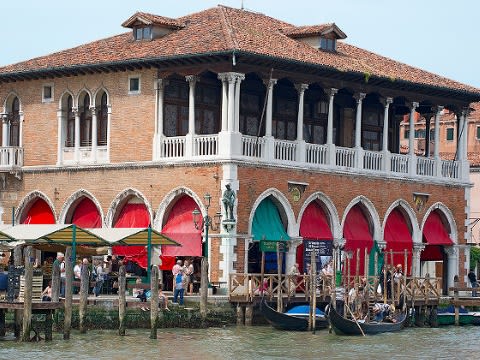
The Rialto Fish Market was established in 1907 and soon became a must-see stop on any gastronomic tour of Venice. The fresh Venetian seafood sold there can be smelled from a distance as you ride the vaporetto or gondola on the waters of the Grand Canal.
Although much less ancient than other buildings, the façade features beautiful elements characteristic of Gothic architecture, combining exposed brick with pointed arches and carefully carved capitals. Its construction followed the traditional method used in Venice since ancient times: 18,000 wooden piles were driven into the ground to lay the foundations of this structure.
9. Marvel at the facades of the Venetian palaces or Ca's.

Since the Grand Canal of Venice has been and continues to be the city's most important thoroughfare, along the route you will find numerous Venetian houses and palaces that will help you understand a little of the culture and history of this impressive city. Touring the interior of some of these works of art is one of the best things to do in Venice, whether you are spending three days in Venice or four days in Venice. Below is a list of the Venetian palaces that you can admire from the Grand Canal.
Esquina della Ca' Grande Palace
Located just opposite the Guggenheim, this palace was built in 1545 by the architect Jacopo Sansovino for the Corronodo family, one of Venice's traditional families. Its architecture, entirely inspired by classical Rome, makes it more typical of the Renaissance style than the distinctive Byzantine style characteristic of Venice. To notice this, take a close look at its Doric, Ionic, and Corinthian columns, strategically placed on each of the small balconies that serve as exits to each of the large windows on the second and third floors.
Grassi Palace
Located in San Marco, the Palazzo Grassi was designed by Giorgio Massari in the 18th century. In recent decades, it has returned to the public eye after being acquired by the Fiat company and transformed into an exhibition hall. The building has both Baroque and classical styles, with an architectural layout that is quite atypical in Venetian architecture, consisting of four three-story wings located around a rectangular central courtyard. Some of Venice's most important events and fairs are held in this building.
Ca' Rezzonico
Ca' Rezzonico is a large building that now houses the Museum of 18th-Century Venice, a must-see for all lovers of classical art. The museum's collection provides an accurate insight into Venetian life during the Rococo period. It is an on-site museum with admirable and rather unusual aesthetic features, where almost all the art on display was created specifically for this museum.
Its design and construction were carried out in two stages, the first by the most influential architect in Renaissance Venice, Baldassare Longhena, in 1660, and the second by Giorgio Massair himself almost a century later.
Ca' Foscari

Considered one of the most important and beautiful buildings in Venice, the great Ca' Foscari click here rises imposingly from the waters, displaying a wonderfully executed late Gothic architectural style. At the time of its construction, it brought important innovations to Venetian architecture, being the first four-story building along the canal. The Foscari family was expelled from Venice, so the building was used for various purposes. Today it serves as the administrative headquarters of Ca' Foscari University.
Ca'da Mosto
Although it does not have one of the most impressive façades among the palaces of Venice's Grand Canal, Ca'da Mosto has enormous historical significance as the oldest palace on the canal, built in the 13th century. Its façade does not display the same level of ornamentation, detail, and symmetry as other buildings; on the contrary, the three entrance arches, one wider than the others and positioned not in the center but to one side of the building at water level, are particularly striking. Currently, the interior is in ruins, but there are plans to restore it and convert it into a luxury hotel.
Ca' d'Oro
The Palazzo di Santa Sofia is affectionately nicknamed the Golden House or Ca' d'Oro by the Venetians. This marvelous 15th-century palace could easily be described as the most beautiful palace in all of Venice, making it a must-see on any tour of the Grand Canal.
Its construction was commissioned by the Contarini family, and it is said that in other times the imposing façade was completely covered in gold leaf. Although this no longer exists today, the Venetian Gothic architecture of the building remains just as impressive thanks to its delicate lines and sumptuous decoration. Today it houses the Giorgio Franchetti Gallery.
Ca' Pesaro
Another spectacular Venetian Ca' can be found in the Santa Croce area. This building serves as the International Gallery of Modern Art in Venice, and although its collection is a little less impressive than that of the Peggy Guggenheim Museum, it is certainly worth stopping by for a visit.
10. Cross each of the bridges of the Grand Canal

One of the most important features of Venice is its numerous bridges, which serve as arteries connecting the small islands. Along the Grand Canal you will find four large, beautiful and imposing bridges.
Ponte di Rialto (Rialto Bridge)
The first bridge to be built at this location was a wooden bridge in 1118. Almost 150 years later, in 1588, the Rialto Bridge as we know it today was built. It is 22 meters high and is supported at its base by approximately 6,000 wooden piles at each end. In addition to being the oldest, the Ponte di Rialto is considered the most interesting and is home to all kinds of stories and secrets.
Ponte dell'Accademia and the Academy of Fine Arts
With the Austrian invasion of Venice, a second bridge was built in 1815 to connect the two banks of the Grand Canal. In 1932, the bridge was replaced by a beautiful wooden bridge, which was initially intended to make way for the final construction of a stone bridge. However, the structure won the hearts of the Venetians, who, years later, refused to accept its replacement.
Ponte della Costituzione (Constitution Bridge)
The Constitution Bridge is one of the modern additions to classic Venice. Commissioned in 2007, the bridge was designed by the talented Spanish architect Santiago Calatrava. The intention was to have a new connecting element between the two banks at the end of the Grand Canal.
Calatrava's design does not seek to imitate the more traditional Venetian styles, but rather, in keeping with our times, is characterized by a curved and elegant line that takes shape thanks to the concrete structure. The bridge has been entirely clad in a combination of marble and glass.
Ponte degli Scalzi (Bridge of the Barefoot)
Architect Eugenio Miozzi was commissioned to build a new connecting element at the exit of the Santa Lucia station, with the intention of replacing an old stone bridge built on the same site in 1858. For the Ponte degli Scalizi, Miozzi chose a stone design for his work.








